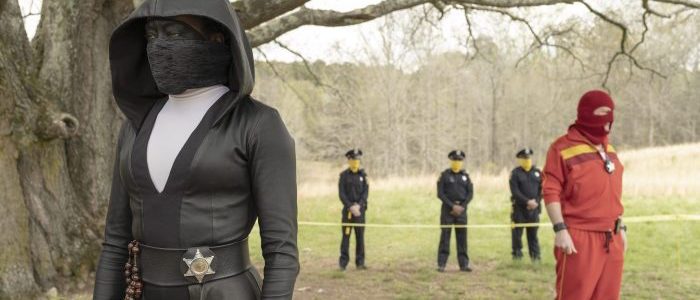
While showrunner Damon Lindelof has called his television take on the Watchmen graphic novel a “remix,” it is still set after the events of the original source material, and every episode is loaded with references to the 1986 comic classic. Some are very easy to spot, others a bit more subtle. Since not everyone had the time to re-read the Alan Moore and Dave Gibbons comic or take a college course on it (they exist!), we figured we’d dive into all the references we spotted, but be warned: this is going to be spoiler-heavy. If you’re ready to be spoiled, check out the Watchmen references below.
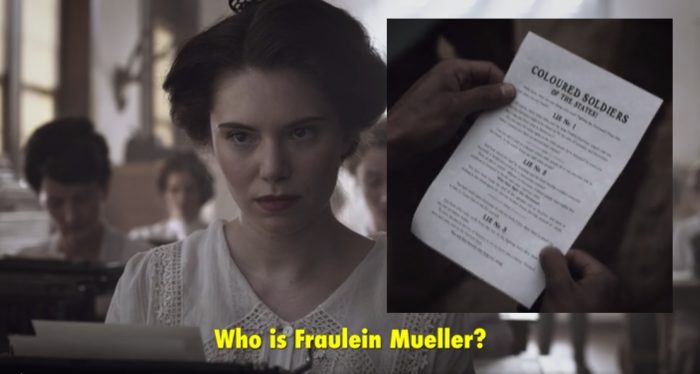
Fraulein Mueller and WWI
We learn in the opening scene of this episode that the “Please look after this boy” note given to the child saved from the 1921 Tulsa Massacre was written on the back of a piece of German propaganda picked up by Will’s father while serving in World War I.
This is based on actual propaganda used by the Germans during the war to diminish the morale of black soldiers, and also tell some hard truths about inequality in America. A possible easter egg here is the similarity in the last names of the flyer’s translator, Fraulein Mueller, and Rolf Müller the circus strongman shown later in the episode. Though written differently, they are very similar names. This may not mean anything, but this being Watchmen, we had to mention it, just in case.
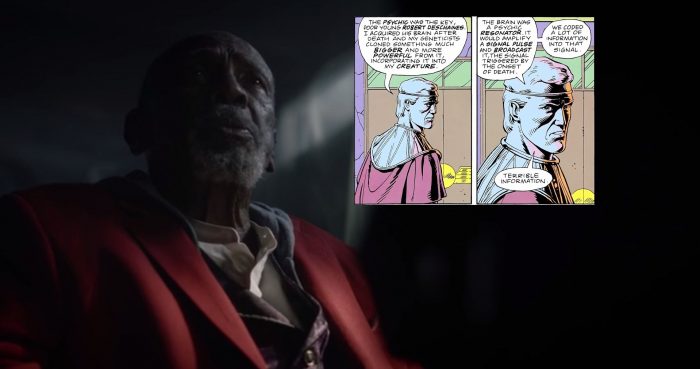
Psychic Powers Exist
When confronted by Angela about who he is and what he did to the chief of police, Will answers that he killed him with psychic powers. Though Angela dismisses the idea, psychic powers actually exist in the Watchmen universe.
In the final issues of the graphic novel, Ozymandias reveals how he pulled off dropping a giant squid on Manhattan. He says he stole the brain of a deceased supervillain named Robert Deschaines – who was a psychic, and cloned it to be much bigger. The brain would transmit a signal pulse through telepathy and traumatize those who survived the attack.
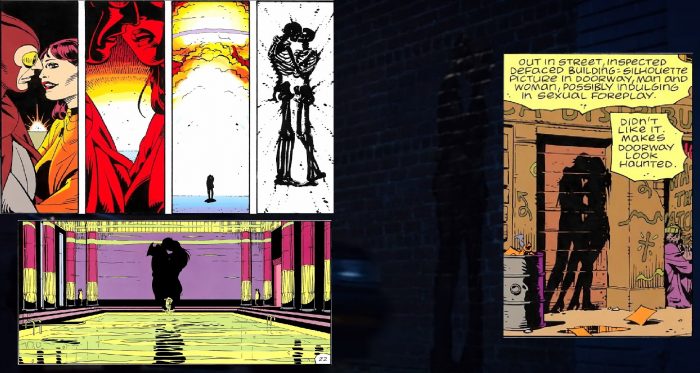
Hiroshima Lovers
A bit of a subtler reference: we see a familiar piece of street art when Angela drives away from her bakery on the way to the scene of the crime. It’s the silhouette of two people embracing, something often seen on the background in the original graphic novel. At one point, Rorschach passes by it and criticizes the graffiti tag, and the image of two lovers embracing at the face of annihilation is repeated in a nightmare Nite Owl has.
The graffiti tag is dubbed the “Hiroshima lovers,” referring to the shadows left behind by victims of the Hiroshima atomic bomb attack. It is a reference to the French film Hiroshima Mon Amour from 1959 and is used in the comic to symbolize the coming atomic war.
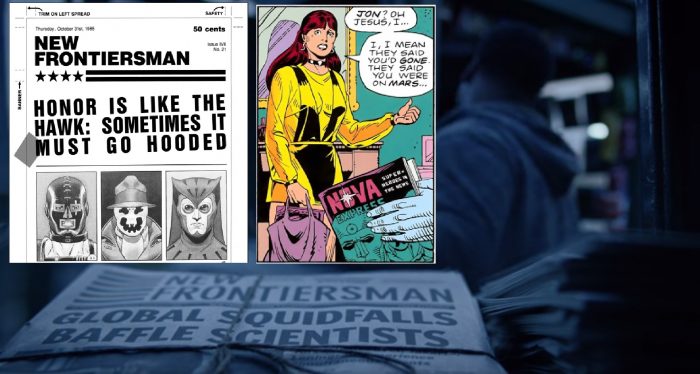
Newspaper War
A big part of Moore and Gibbons’ Watchmen deals with a Times Square newsstand where a talkative vendor interacts with several costumers, including Rorschach’s alter ego and a kid who likes to read comics. This is mainly to show the common person’s view of superheroes affairs, and the Watchmen show just found its analog in a Tulsa newsstand with a skeptic owner who isn’t so sure about the origin of the squid rains.
In the scene we get a shot of the cover of “New Frontiersman,” a right-wing tabloid from the graphic novel to which Rorschach entrusts his journal (and whose editor was revealed to be a KKK apologist, according to the TV show’s official companion site). The owner of the newsstand also refers to the newest issue of the “Nova Express” magazine, which is the political antagonist of the “New Frontiersman,” and was critical of costumed heroes.
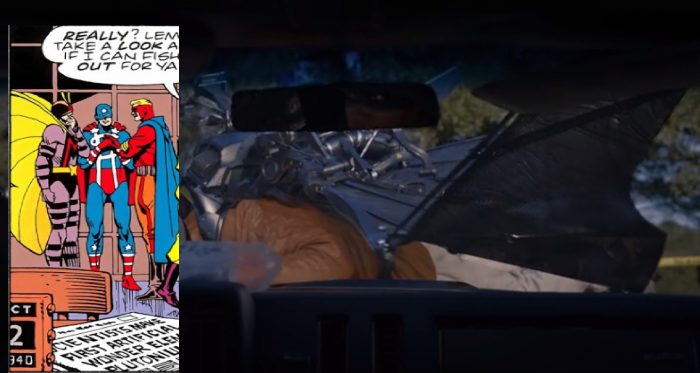
Moth Paparazzi
When Angela visits the scene of the crime, we see two photographers trying to capture pictures while flying with the help of wing-like suits. A fellow detective called Red Scare refers to the paparazzi as “moths.” This is most likely a reference to Mothman, a member of the original Minutemen group of costumed vigilantes.
It is easy to assume that after the events of the comic, people were able to emulate the technology used by vigilantes, like how the cops have a flying ship and goggles similar to the ones used by Nite Owl.
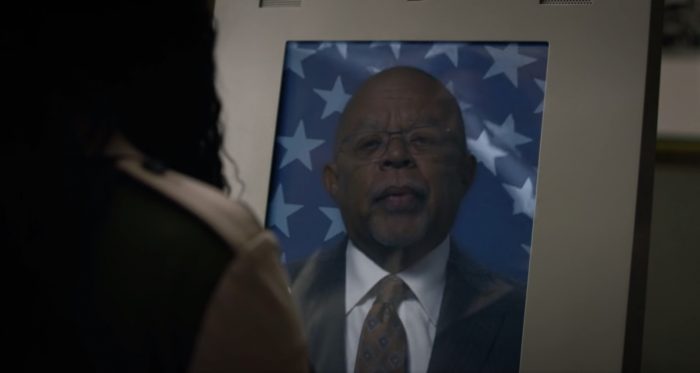
New Treasury Secretary
This one is pretty straightforward. When Angela visits the Greenwood Center for Cultural Heritage, she is welcomed by a digital greeter in the form of Robert Redford’s Secretary of Treasury, Henry Louis Gates Jr.
In real life, Gates Jr. is a Harvard University professor and prominent scholar of African-American history and culture. The official companion site for Watchmen also reveals that Vox co-founder Ezra Klein is the Press Secretary.
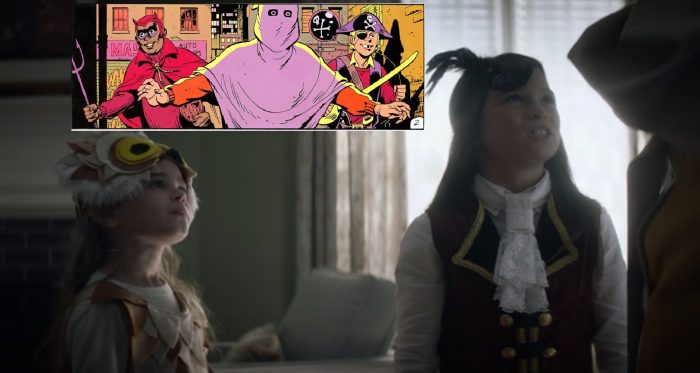
Pirate and Owl Costumes
When we see Cal playing with the younger kids, one is dressed as a pirate and the other as an owl (a reference to Nite Owl?) while Cal himself is a ghost. In the graphic novel, the story is intertwined with a comic-within-a-comic called Tales of the Black Freighter, because pirate stories were massively popular since superheroes are real and no one is interested in fake heroes.
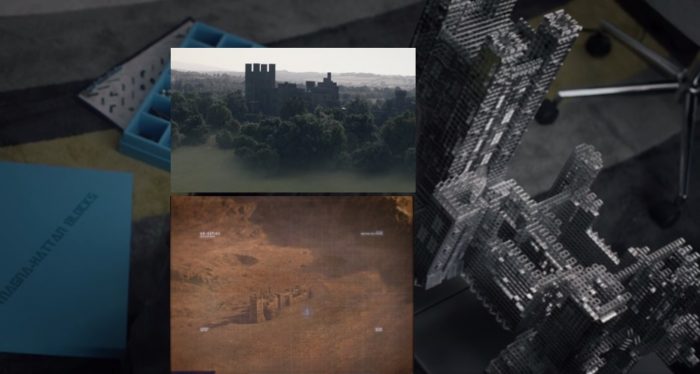
Magna-Hattan Balls
Angela’s oldest son, Topher, is seen playing with a levitating building toy that the box reveals is called “Magna-Hattan Blocks.” It is easy to assume that the toy is inspired by the abilities of the big blue guy and was possibly built via the scientific advances he pioneered while on earth.
Also worthy of note is the striking similarity between the complex structure that Topher is building, Doctor Manhattan’s Martian palace, and the castle where Jeremy Irons’ character lives.
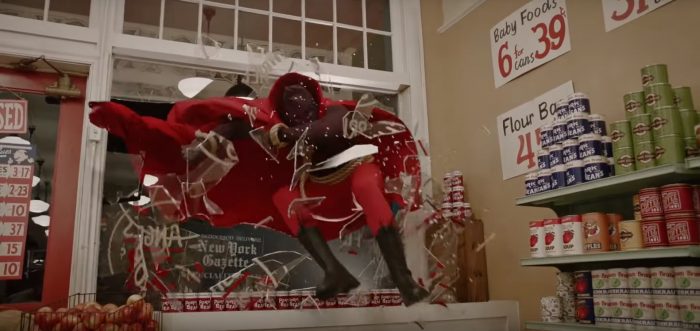
Riffing on Zack Snyder
Just like how the graphic novel had a comic-within-a-comic, Watchmen has a show-within-a-show called American Hero Story, which recounts the history of the Minutemen. In this episode, we see the introduction to the story of Hooded Justice, the very first masked vigilante whose identity is still unknown. The segment alludes to the graphic novel and the only known answer to Hooded Justice’s identity – the circus strongman Rolf Müller – though the narrator explains that’s definitely not him.
Also of note: this scene is a very clear allusion to Zack Snyder’s 2009 take on Watchmen. The American Hero Story segment may be a Ryan Murphy joke on the surface, but the overtly gratuitous violence, the slow-motion, and the the overwrought voice over feels like a nod to, or a dunking on, how Snyder portrayed this material.
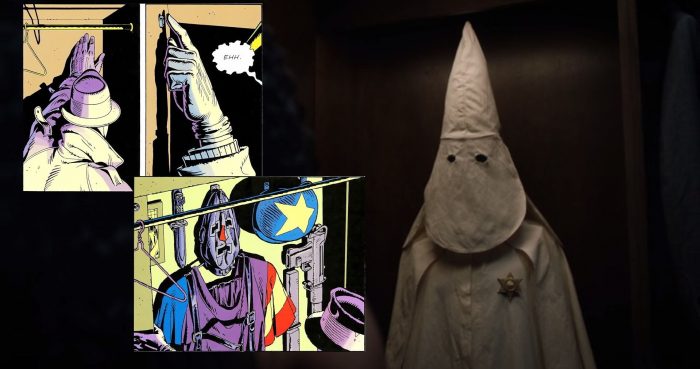
Skeletons In The Closet
When Angela sneaks into the room of Judd, she finds a secret compartment hiding a KKK robe. This is reminiscent of one of the earliest scenes of the Watchmen graphic novel where Rorschach sneaks into the apartment of the recently deceased Comedian and finds a secret compartment in his closet, hiding his vigilante costume and a whole load of weapons.
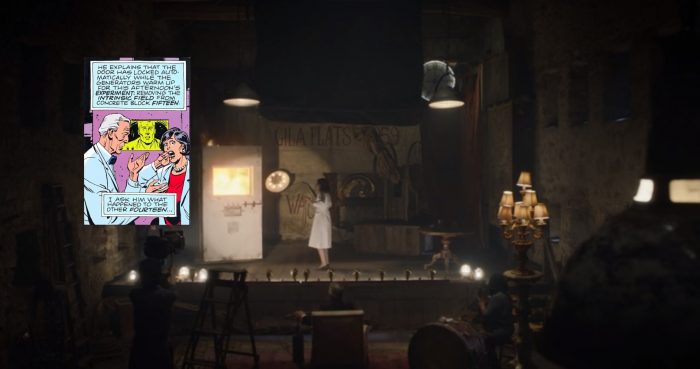
The Watchmaker’s Son
This is not nearly subtle enough to be a full-on easter egg, but it’s a pretty explicit reenactment of the origin story of Doctor Manhattan. We see how a young Jon Osterman was caught in an experiment gone wrong at the Gila Flats compound, where he was turned into a blue superhero. Though it is unclear how Jeremy Irons’ character knows this story and all the detail (although I think we all have a pretty good guess at this point), it is nice to see the low-fi adaptation of this story play out.
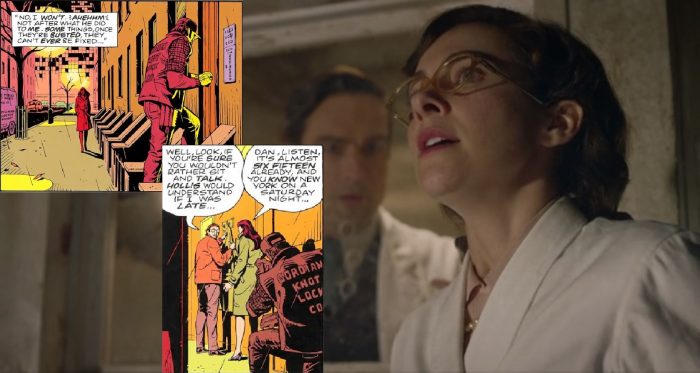
The Gordian Knot
The dialogue during the play does reveal a nice easter egg. As Jeremy Irons’ character reminds his assistant what her lines are, he hollers that the door is “as impenetrable as the gordian knot itself.” Historically, this ties back to Alexander the Great’s abilities to solve complex issues, and a claim that he manages to solve an impossible-to-untangle knot by cutting it down with his sword.
But in terms of Watchmen, the Gordian Knot also refers to Gordian Knot Lock Co., a company specializing in making locks for house doors. Their motto is “They’ll Never Undo This Sucker.” It is often seen whenever Rorschach breaks into someone’s house, as he doesn’t even try picking the lock, but simply smashes the door.
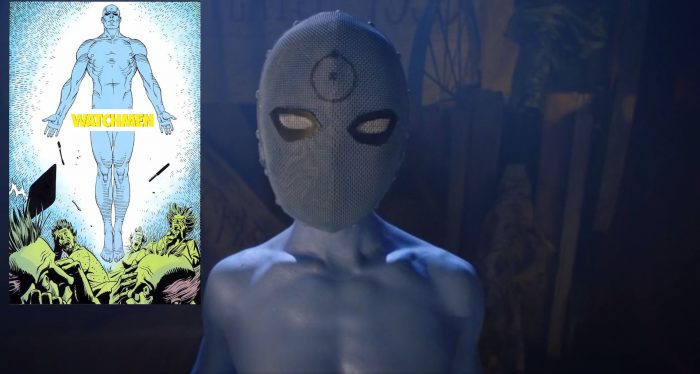
Big Blue
Not as much an easter egg, but a fun fact nonetheless. From the moment the show was announced, some curious viewers started wondering if and when the show would reference one of the comic’s more R-rated visuals: Doctor Manhattan’s blue penis. Well, even if it wasn’t technically Doctor Manhattan, viewers got a first sight of full frontal nudity during the play. Now, if The Leftovers was any indication, better get your bingo cards ready for if and when Justin Theroux is cast as the actual Doctor Manhattan thanks to his attributes. Never forget “the dick shelf.”
The post The ‘Watchmen’ Reference Guide: Every Easter Egg in “Martial Feats of Comanche Horsemanship” appeared first on /Film.
from /Film https://ift.tt/2MTYP55
via IFTTT
Comments
Post a Comment